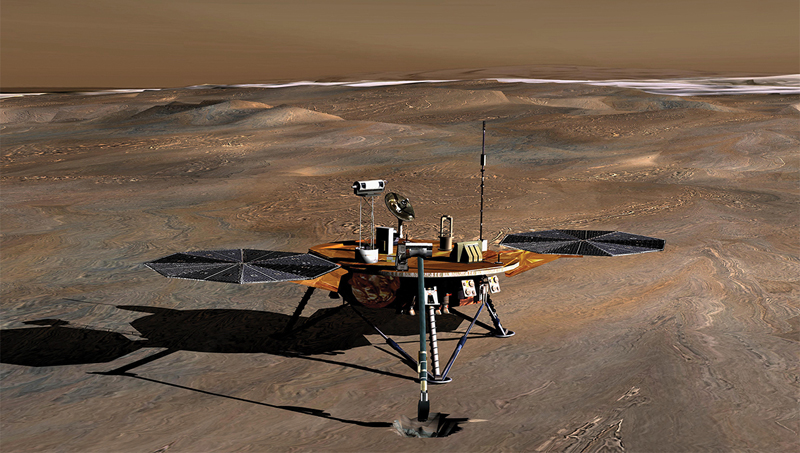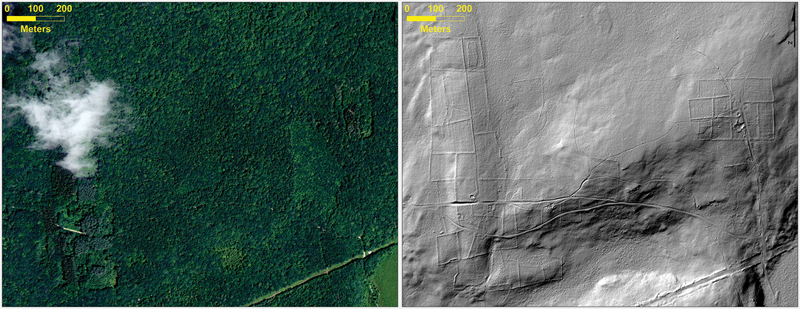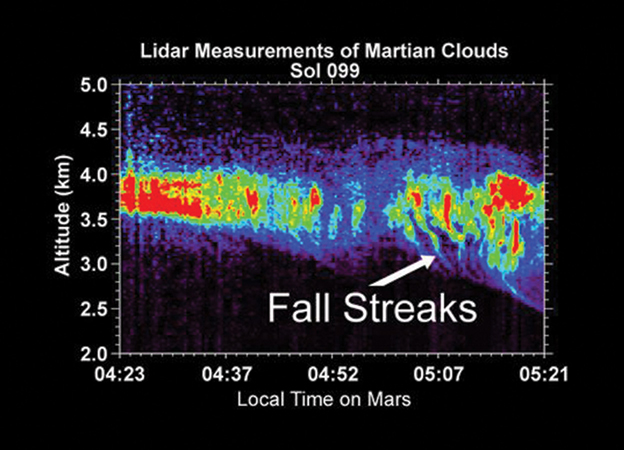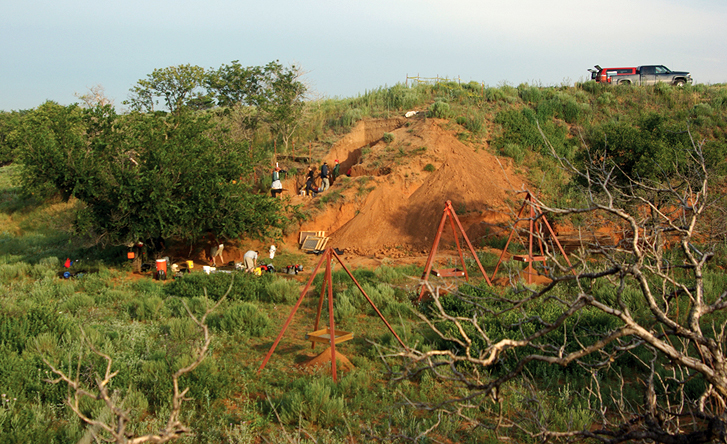
Laser Imaging Helps Archaeologists Dig Up History
NASA Technology
Some 10,500 years ago, what is now western Oklahoma teemed in late summer and early fall with bison, traipsing through the grassy landscape. For the humans who lived then, the huge mammals were a tempting food source, and every year a gathering near the Beaver River was timed so they could hunt the animals as they passed through.
The hunters funneled the herds into narrow, dead-end arroyos—steep gullies cut into the hillside by the river—with others waiting along the rim with spears, killing the bison by the dozens. Then they would slice off the choicest meat to eat during the gathering, leaving behind skeletons.
Walk through western Oklahoma today and there is little visible evidence of these hunting expeditions. Few bison remain, and dirt and rocks have filled in many of those arroyos.
But another look with some high-tech equipment can give archaeologists hints of the treasure troves of fossils and bones hidden below the surface. Laser-based remote sensing equipment called lidar can scan the landscape and pick up details hard to see with the naked eye. And the technology owes a lot of its development to scientists looking at something very different: planets, moons, and asteroids.
In lidar scanning, one or more lasers sends out short pulses, which bounce back when they hit an obstacle, whether clouds, leaves, or rocks. “When the pulse leaves the instrument, there is a detector that starts an electronic clock,” explains scientist George Shaw, who is the laser systems lead for the Origins, Spectral Interpretation, Resource Identification, Security-Regolith Explorer (OSIRIS-REx) mission, which aims to send a spacecraft to an asteroid to collect samples and bring them back to Earth.
“When the laser pulse hits the surface and is reflected back—it’s scattered, but some amount of light is reflected back—it is directed into a photo detector and that stops the clock,” he explains. The instrument calculates how long it all took and, using that information, can calculate the distance from the lidar instrument to the surface the pulse just hit.
“You do that many, many hundreds of thousands or millions of times over the whole surface of the asteroid, and eventually you can build up a high resolution, three-dimensional topographic map,” says Shaw, who is based at Goddard Space Flight Center.
The OSIRIS-REx Laser Altimeter (OLA) was designed with two lasers to scan the surface of the target asteroid, Bennu, and the 3D map it creates will help the mission team select a site to gather samples. “Ideally they’re going to find a nice flat area,” Shaw says, one without any large boulders, and which has small grains or gravel for the instruments to scoop up.
Technology Transfer
NASA has been incorporating lidar devices into missions dating as far back as Apollo 15 in 1971, and its work has helped drive forward the technology both through in-house development and through contracts with commercial companies.
Through an agreement with the Canadian Space Agency, OLA was built by Canadian firm MacDonald, Dettwiler and Associates, in partnership with Vaughan, Ontario-based Teledyne Optech, which designed the lidar.
It is not the first contribution from Teledyne Optech to a NASA mission. The 40-year-old company, which also has offices in Mississippi and New York, specializes in designing and building lidar instruments, and in 2008, the instrument it provided to the Phoenix Mars lander made a huge discovery.
The ground-based lidar took measurements of the Martian atmosphere to make a profile based on the airborne dust and clouds the laser bounced against.
“What we saw in the lidar results were these streaks of brightness in the atmosphere above the lander, and the only thing it could have been was ice crystals,” says Paul LaRocque, vice president of special projects at Teledyne Optech.
In other words: the Teledyne Optech lidar found snow in the atmosphere of Mars.
Since then, the company has made good use of the work it did to build the Phoenix lidar, incorporating those innovations both in OLA, which uses an updated version of the high-energy scanning laser, and in its wider commercial offerings, which benefit from the changes needed to make the instruments space-ready.
“Size, weight, and power are always the issues,” explains senior engineer Jeff Tripp. “Most lidars, if we’re talking about working on Earth, they’re going to be hundreds of pounds and fill rooms.” That wouldn’t work for the Phoenix lander, of course, which had to be light enough for a launch.
“This particular unit was under 20 pounds and took up very little space—it was the size of a bread box. So getting it compact and running at a reasonable power was one of the real tricks,” he recalls, one which paid off big-time for Teledyne Optech’s commercial clients, who also appreciate smaller, less power-intensive instruments.
“The things we’ve learned on space programs, to build more compact lidars, that’s helped us immensely in miniaturizing our commercial lidars,” LaRocque emphasizes.
And it was one of those commercial lidars that helped archaeologists at Beaver River scan the landscape for bison kill sites.
Benefits
In the Beaver River area, the archaeological research team flew overhead scanning with an Optech ALTM-3100C airborne laser mapping system, operated by West Virginia University National Resource Analysis Center.
“You’ll never find bison bones with airborne lidar, but you can find the geological features that suggest a place to look,” explains Meg Watters, who specializes in using remote sensing and 3D imaging for archaeology, and visited the Beaver River team as the remote sensing and visualization director and presenter for television show “Time Team America.”
The Teledyne Optech lidar has the ability to give a 3D model of the surface that includes the grass, bushes, and trees, but also a bare-earth version, stripping all that away. That’s because Optech lidars don’t just bounce back once; the instruments can get up to eight returns from each laser pulse, explains LaRocque. For instance, one pulse might hit at the treetops, then in the branches, and then on the ground below.
“By processing it with our software,” he says, “you can then get to the bare earth and see structures or features that were so overgrown that they wouldn’t be obvious at all to someone on the ground.”
Watters and fellow archaeologist Lee Bement, who has led the research in the area for years, were able to pinpoint little contrasting lines in the scans that indicated a possible filled-in arroyo. They checked them out on the ground and saw more details that suggested they were on the right track, Bement explains.
Once they had promising locations, they could go in with tools to dig beneath the surface to look for the bones and other artifacts that reveal information about the people and animals who lived, hunted, and died there thousands of years ago.
The guidance from the lidar scans led them to look on the hill between two arroyos, Bement says, where “we found a processing area, where they had brought parts of a couple bison and butchered them,” Bement says.
The lidar imaging has “been useful in delineating where we need to concentrate our efforts,” he adds. “It saved us a lot of time and effort.”
Data from lidar scans have helped lead to several other highly touted discoveries in recent years, including pinpointing the site of the legendary lost Ciudad Blanca in Honduras. That team turned to the Houston-based National Center for Airborne Laser Mapping, which uses Optech’s Titan and Gemini lidars.
Although archaeologists are not the biggest market for lidar instruments, simply because the researchers often don’t have enough funding for the costly devices and flights, they are increasingly turning to the technology wherever possible to gain insights for their research.
In New England, Katharine Johnson, a PhD candidate at the University of Connecticut, and advisor William Ouimet were able to advance the study of landscape history in the region thanks to several publicly available datasets from federally funded scans of Connecticut. Johnson was able to strip away the forest canopy and recognize remnants of stone walls, building foundations, abandoned roads, and what was once cleared farm land.
“Without this data, you might have to go out and measure everything by hand, which would be really difficult” across such a large region, Johnson explains.
“The advent of lidar has basically revolutionized the way we are able to study the landscape.”

On the left is an aerial photograph of a forest in Connecticut. On the right, a bare-earth lidar image gives a view beneath the overgrown vegetation, where there are remnants of stone walls, building foundations, abandoned roads, and what was once cleared farm land.

The Phoenix Mars Lander used a lidar device built by Teledyne Optech to scan the Martian atmosphere in 2008. In this graph of the lidar results, the vertical streaks on the right show ice crystals falling. Based on the temperatures recorded, the ice could only have been water-based—in other words, snow.

An archaeological team led by University of Oklahoma’s Lee Bement excavates a 10,500-year-old bison kill site near the Beaver River. Using lidar scanning, the team was able to narrow down sites to search further for prehistoric artifacts.

Artist's rendering of the Phoenix Mars Lander













